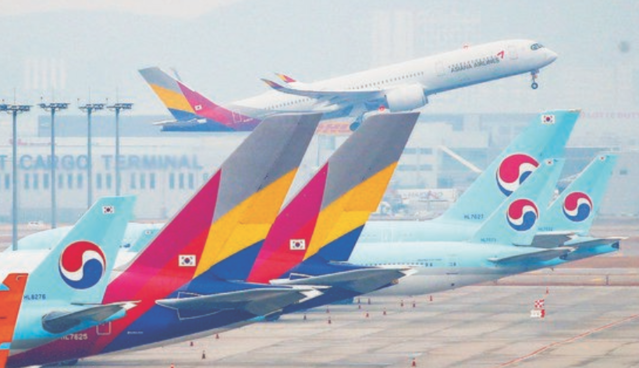Input 2021-03-16 09:36 | Revision 2021-03-16 09:59

The overall outline will be included in the integrated plan submitted to the Korea Development Bank tomorrow.
It is expected that there will be a principle position to dispel concerns about monopolies and restructuring, as well as management plans such as manpower and routes, growth plans for new businesses.
Previously, Korean Air decided to submit an integrated plan by the 17th to the Korea Development Bank, which will invest 800 billion won.
The first major content was caught up as’new business’. In addition to the existing passenger business, it emphasizes the growth potential of new businesses such as cargo, maintenance (MRO), and space industry for the purpose of investment by Korea Bank, the largest creditor.
To support this, last year’s results are presented. Korean Air made an operating profit of 238.3 billion won last year. Passenger revenue decreased by about 70% in the aftermath of Corona 19, but surplus surpassed expectations due to increased cargo and reduced fixed costs such as labor costs.
New business employment creation and MRO competitiveness are also highlighted.
Currently, other nationality companies except Korean Air leave the maintenance volume to the outside. Many of these are handled by Korean Air’s MRO. As a business that can generate stable profits, it was excluded from the sale last year to secure liquidity.

▲ Korean Air-Asiana company overview ⓒ Kim Soo-jung, graphic reporter
Some are concerned that when the two companies merge, they will monopolize a number of long-distance routes, resulting in consumer damage, such as an increase in freight rates.
The market share will increase when considering integrated LCCs that combine Air Busan and Air Seoul with Jin Air, a subsidiary LCC.
Korean Air’s position is that there is no monopoly when reflecting market characteristics such as competition among foreign airlines. In the merger plan, it is said that the market share based on slots (flight time, number of flights) will be emphasized, not the share of routes. The integrated company’s slot-based market share is about 38.5%.
In the case of a rate increase, it is not possible to check the rate by supervisory agencies such as the Fair Trade Commission and the Ministry of Land, Infrastructure and Transport. From the beginning of the deal, the Ministry of Land, Infrastructure and Transport has emphasized that “there will be no damage to consumers due to freight rate hikes after the merger between the two companies.” Government-level measures such as limiting the extent of annual fare increases are also expected.
In addition to the overall organizational reorganization, it is expected to actively explain the plan for redundant and redundant workforce relocation. It is the opening of a new business division and relocation of personnel in charge.
Hwang Yong-sik, professor of business administration at Sejong University, said, “In fact, in the final stage of the acquisition, Korean Air will try to build trust and bonds with the Korea Development Bank and consumers regarding the acquisition of Asiana.” It is expected to convince the company’s investment justification.”
Press releases and article reports [email protected]
[자유민주·시장경제의 파수꾼 – 뉴데일리 newdaily.co.kr]
Copyrights ⓒ 2005 New Daily News-Unauthorized reproduction, redistribution prohibited
recommendation
Related Articles It’s great to read it with the article you just saw!
Vivid
Headline news Meet with the main news at this time.
